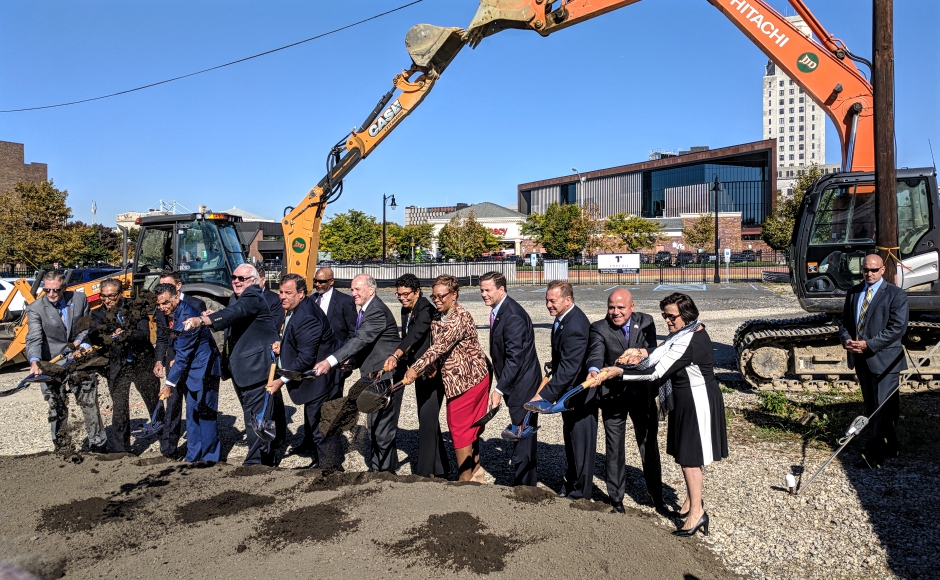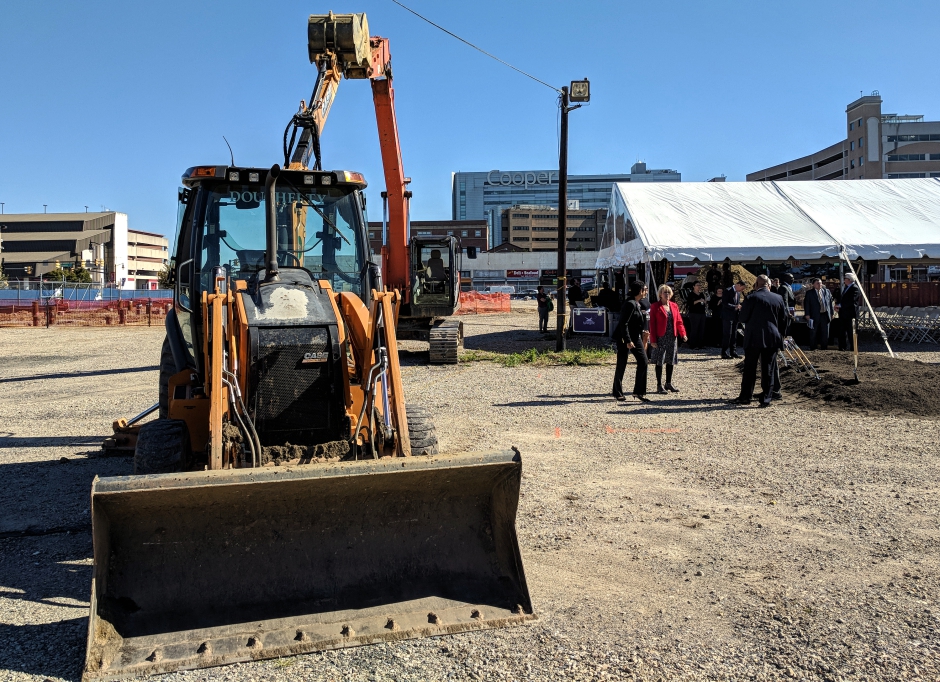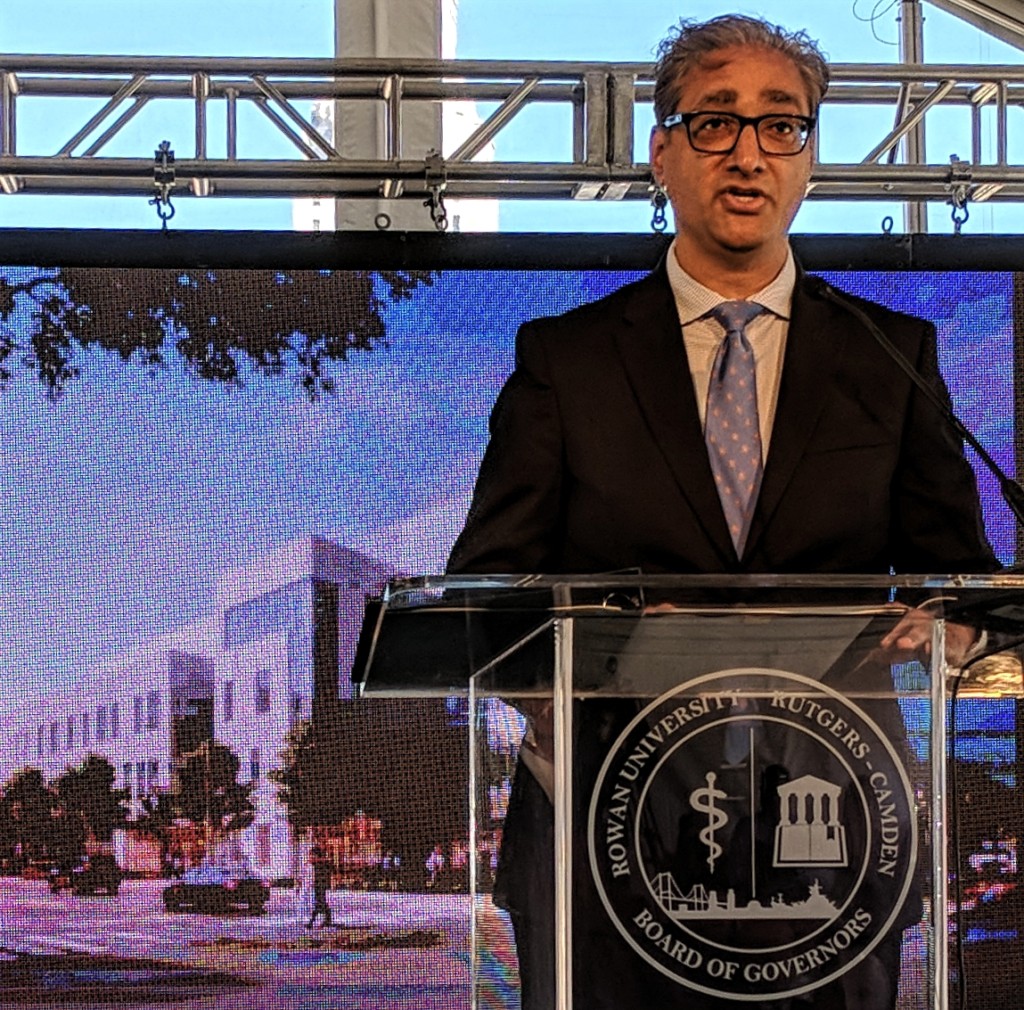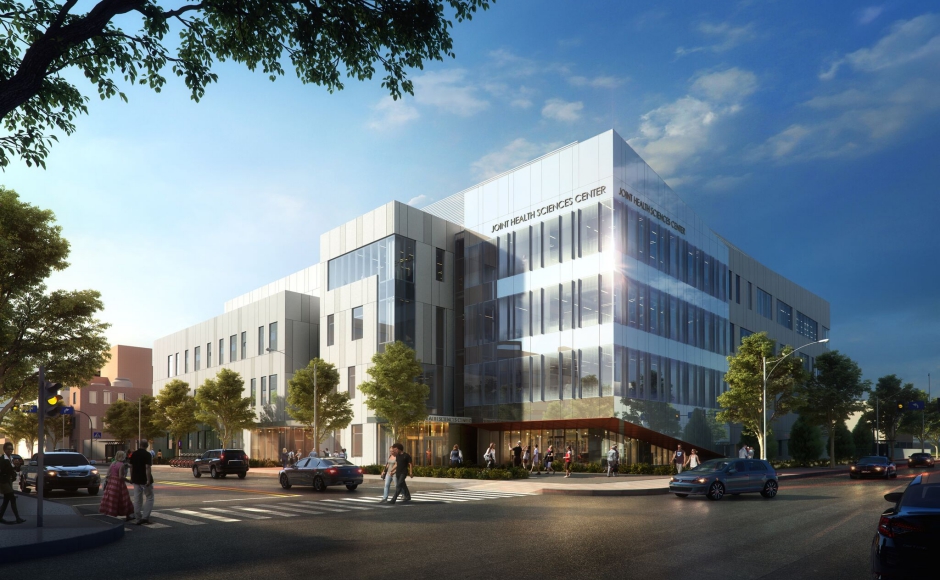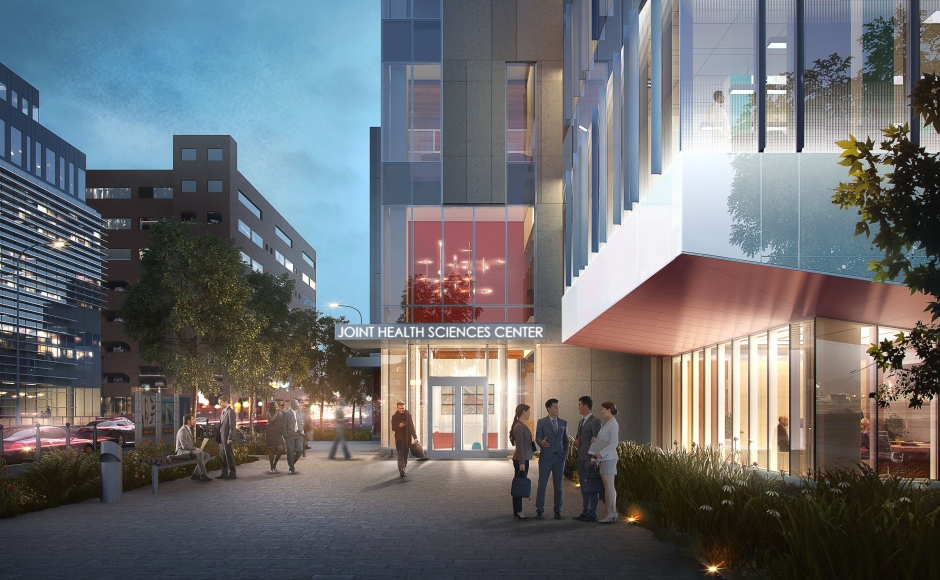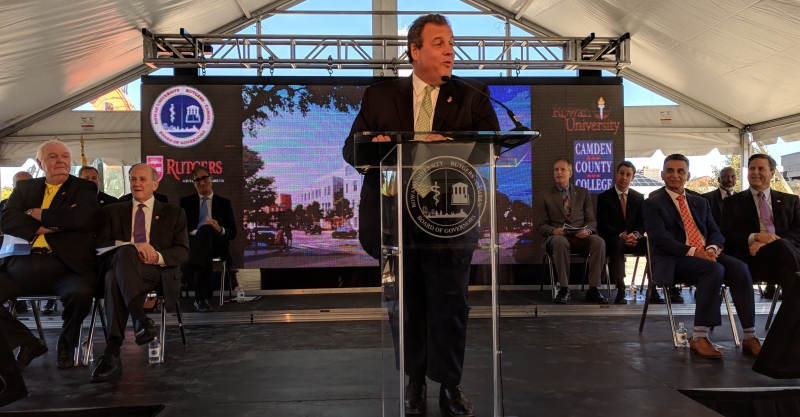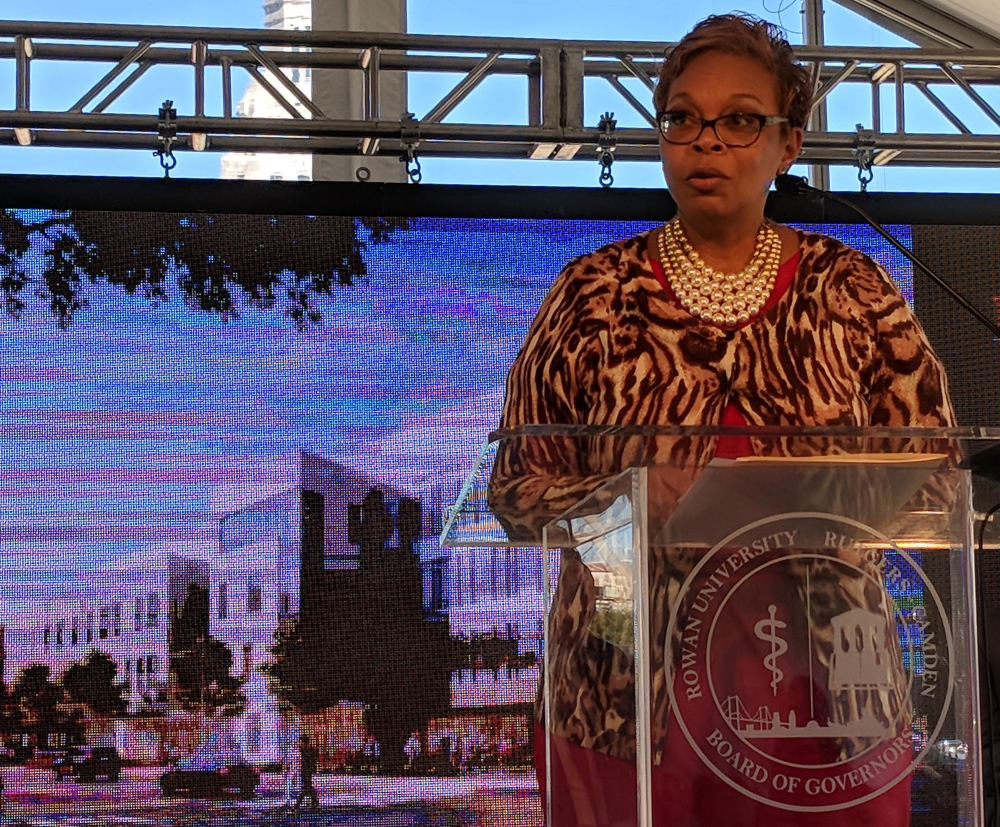Touted by project developers as the first of its kind in New Jersey, the $72-million campus will connect healthcare training and research opportunities among four academic institutions.
By Matt Skoufalos | October 19, 2017
With elected officials calling it a catalyst for economic and educational development, shovels hit the ground Thursday in Camden City, as the Rowan University Rutgers-Camden Board of Governors (RURCBOG) broke ground on its $72-million Joint Health Sciences Center.
The two-phase project at the corner of Martin Luther King Boulevard and Broadway will include facilities for Cooper Medical School of Rowan University, Rutgers University, and Camden County College, as well as for RURCBOG, which described it as the first center of its kind in New Jersey.
A video fly-through of the four-story, steel-and-glass building showed rooms allocated to the Rowan-based New Jersey Institute for Successful Aging, a simulation room for Cooper Medical School, the Rowan School of Osteopathic Medicine, and other amenities like a first-floor café and rooftop terrace.
Slated to open in March 2019, the project was funded with $50 million from the state biomedical facilities act, $20 million from the higher education “Building Our Future” bond act, and $2 million from RURCBOG.
RURCBOG CEO Kris Kolluri described the project as “an efficient and powerful way to leverage taxpayer investment in higher education,” while RURCBOG Chair Jack Collins called the building “an important milestone for the joint board and our institutional partners.”
Meds-and-eds projects comprise “the spine of the city,” Kolluri said.
He said the joint center will offer a platform for research as well as local job training in viable career fields.
“Our goal is to leverage the institutions that are here and build the next level,” Kolluri said.
“This isn’t an esoteric exercise. We know what we want to do, and we want to do it in a way that’s inclusive of the city.”
Care will be taken to make sure that the building itself is integrated within the neighborhood, both physically and functionally, Kolluri said. He theorized that some of its common spaces could be made available to residents in off-hours, and said the project had been planned “to keep disruption [to civic life] to a minimum.”
More importantly, however, Kolluri said the kind of vocational training the center would offer is directly relevant to future job growth in the region.
Medical assistant and patient technician career tracks will be available for students right out of high school, and the recently created Alzheimer’s patient caregiver certificate program is accessible as a change-of-career opportunity.
In all, Kolluri said the Camden metro area is poised to see an additional 24,000 healthcare jobs in the coming years, and he believes the center can offer a clear pathway to them.
“We need to focus on creating a platform for growth,” Kolluri said. “You have to make sure the education is practical and accessible, and make sure the degrees you offer have jobs that are ready-made.”
In addition to the $72 million project costs, an economic analysis prepared for the joint board projects that the center will add 580 full-time local jobs (840 in total across the state), bringing in $39 million in labor income ($56 million statewide), and generating an additional $3 million in tax revenues, half from payroll taxes.
Furthermore, the report claims that by situating the center in the Camden eds-and-meds corridor, it can strengthen the city as an innovation hub, produce skilled workers in a growth industry, and attract additional businesses to the area.
“Even more important than the direct economic footprint represented by RURCBOG’s presence in the city and state is the magnet it represents for intellectual capital, innovation work, and seed money,” the report noted.
Governor Chris Christie, who was on-hand for the ceremony, described the project as reflective of the “ongoing commitment” from the state government “not only to our higher education community, but to the city of Camden.”
Christie said he hopes the facility will encourage professionals trained there to put down roots in New Jersey and build a life here.
“If Rutgers doesn’t lead, then very little special can happen,” Christie said. “We want to invest in the education that New Jersey students can get, and make sure that the brain drain doesn’t kill us, but is in fact reversed, and we keep people here.”
“All of us have come together for a common cause,” said Camden City Mayor Dana Redd, who described the project as adding both vocational training and scientific research capacity to “the premiere medical footprint in the region.”
“This multi-institutional building offering residents different education,” Redd said; “the exact kind of pragmatic approach that we need to take to higher education in this country and region.”

